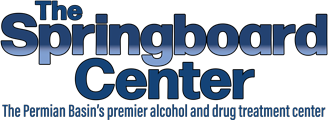“Chasing the dragon” emerged from 1950s Hong Kong’s opium dens, but today it marks a deadlier pursuit. For those wondering, “what does it mean to chase the dragon?,” the ritual involves heating heroin or fentanyl on aluminum foil, creating toxic vapor trails that users desperately follow with makeshift straws.
The name itself reveals a dark truth: like the mythical dragon, the perfect high remains forever out of reach, leaving destruction in its wake. Medical professionals and residential programs now recognize this pattern as more than drug slang terms, but as specific behavior that requires targeted intervention approaches.
Historical Origins of the “Chase the Dragon” Meaning

In the dimly lit opium dens of 1950s Hong Kong, a practice emerged that would eventually span continents. The chase the dragon meaning evolved as the practice spread globally, with users observing the smoke trails resembling mythical Chinese dragons, dancing and weaving through the air.
This term reflected the deep cultural significance of dragons in Chinese mythology, representing both power and elusive desires. As the practice spread along traditional trade routes, it evolved from opium to heroin and eventually to other substances, marking a dark chapter in global drug culture.
Method Explanation: What Does it Mean to Chase the Dragon?

As users heated opium on foil, the heroin would vaporize, creating serpentine trails of smoke that resembled a dragon’s tail. Those who become addicted would pursue these wisps with their pipes, forever trying to catch the elusive vapor — much like the impossible task of catching a mythical dragon.
Today, this method has evolved to include heroin and fentanyl, but the deadly symbolism remains unchanged. Medical professionals recognize this specific pattern of pursuit: users chase an initial euphoric high that becomes increasingly elusive, leading to escalating doses and devastating consequences. The dragon, like that perfect high, remains forever out of reach.
Health Risks and Dangers
Heroin smoking remains one of the most dangerous methods of consumption. The technical process involves heating substances on foil and inhaling the resulting vapors — a method that tragically maximizes drug absorption while minimizing the user’s perception of danger.
The rapid onset of effects, combined with the ritualistic nature of the practice, creates a particularly dangerous cycle of addiction. The process has evolved with modern drugs, but the fundamental risks remain unchanged, if not intensified.
Medical professionals studying chase the dragon meaning have documented severe health impacts of opiate abuse methods, including the following.
Neurological Damage
Inhaling heated drug vapors can cause devastating brain damage through a condition known as leukoencephalopathy. This deterioration of white matter disrupts crucial neural pathways, leading to cognitive decline, tremors, and permanent motor function impairment.
The damage often appears gradually, beginning with subtle coordination problems before progressing to severe disability. Many patients develop irreversible symptoms even after cessation of drug use.
Respiratory Damage and Lung Issues
The intense heat from vaporized substances creates toxic byproducts that severely damage the respiratory system. Users frequently develop chronic bronchitis, scarring of lung tissue, and persistent breathing difficulties.
The aluminum foil used in the process releases additional toxic fumes when heated, compounding the damage. Medical data shows that regular inhalation leads to reduced lung capacity, chronic cough, and increased risk of respiratory infections.
Organ Complications
Beyond the lungs and brain, “chasing the dragon” or chasing that first high feeling wreaks havoc throughout the body’s organ systems.
The liver struggles to process concentrated toxins, often leading to accelerated liver disease. Kidney function becomes compromised from filtering heavy metals and chemical residues. The heart faces increased strain from both the drugs and damaged lung function, raising the risk of cardiovascular complications.
Warning Signs

Physical Changes
Understanding what does chase the dragon mean can also help identify warning signs. Observable physical changes often begin within weeks of regular use. Users typically experience:
- Rapid weight loss
- Dental deterioration
- Characteristic skin problems, including abscesses and track marks
- Liver function tests revealing damage
- Withdrawal symptoms within hours of the last use manifesting as severe muscle aches, profuse sweating, and dangerous cardiac irregularities
Emotional Signs
The chase the dragon meaning encompasses both physical and psychological addiction. The psychological impact manifests in profound emotional changes.
Users often experience dramatic mood swings, with periods of euphoria followed by crushing depression. Cognitive function typically deteriorates in stages, beginning with short-term memory loss and progressing to more severe impairments.
The impact on decision-making abilities becomes particularly evident in financial and relationship choices, often leading to a cascade of personal crises.
Social Indicators
Recognizing the chase the dragon meaning in everyday life can help identify users early, as the social fabric of a user’s life typically unravels in predictable patterns.
Professional performance declines sharply, and financial difficulties mount quickly, often leading to legal troubles and strained family relationships. Social circles narrow to other users, while previously close relationships deteriorate.
Drug Paraphernalia
Foil smoking or “chasing the smoke off the foil” leaves distinctive evidence that family members should watch for. Evidence of use often appears in the form of specific items:
- Aluminum foil with characteristic burn marks
- Shortened straws or tubes
- Lighters with unusual wear patterns
Modern variations might include specialized glass tubes or modified everyday items. Users typically establish specific patterns in their use and disposal of these items, often creating hidden stashes in predictable locations. The legal implications of possession vary by jurisdiction but generally carry serious consequences.
Are you looking to help your loved one? The Springboard Center fully believes that every individual needs to know they need help before they can self-admit — however, we do have structured family programs specifically designed to help you manage your mental health while your loved one is struggling.
Beyond the Chase the Dragon Meaning: Treatment Options

Medical Treatment
FDA-approved medications like buprenorphine and methadone show — but you should be within a strict protocol to do this. Medical detoxification typically requires 5-7 days of intensive monitoring, with some patients needing extended care.
Advanced interventions may include targeted therapies for specific organ damage, while emergency procedures focus on overdose prevention and crisis management.
Counseling Support
Professional counseling proves essential in addressing the psychological aspects of addiction, which is a big part of our inpatient programs within our sober living facility.
Holistic Approaches with the Springboard Center
Ultimately, recovery has to start with the individual knowing they need a better way out. The Springboard Center integrates traditional treatment with holistic methods, helping treat the entire human to manage life inside and outside of the center. With our hospital-grade accreditation and with monitoring by one of the largest addiction repositories in the country, we’re working one-on-one with all of our patients and evaluating our clients’ progress weekly.
Continue your journey to recovery in our or Texas recovery center — contact us today to get started.



